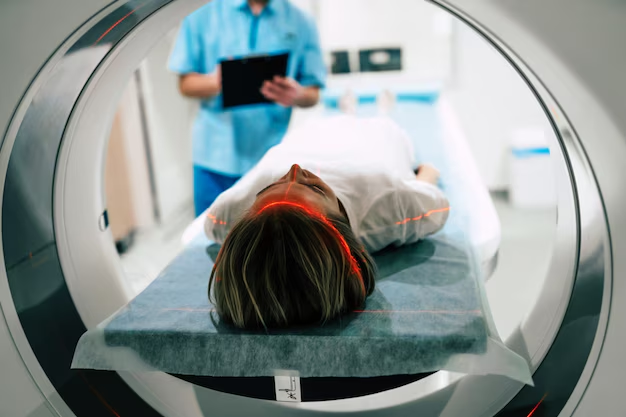The Magnetic Power of MRI: How Does It Compare to a Refrigerator Magnet?
When pondering the power of magnets, everyday objects like refrigerator magnets often come to mind. But in the world of medical imaging, magnetism takes on an entirely different scale with Magnetic Resonance Imaging (MRI) machines. These machines play a crucial role in diagnosing a variety of conditions, but just how much stronger is an MRI compared to that trusty fridge magnet holding your grocery list? Let's delve into the fascinating world of magnetism and see how these two magnets stand in comparison.
Understanding Magnetic Strength
Before diving into numbers and comparisons, it's important to grasp the concept of magnetic strength. Magnetic strength is commonly measured in units called teslas (T). A magnet’s tesla rating indicates its magnetic field's intensity at its core.
What is a Tesla?
A tesla measures the strength of a magnetic field. Named after the renowned inventor and electrical engineer Nikola Tesla, this unit helps quantify the magnetic prowess of various devices and magnets. A typical refrigerator magnet, for instance, might have a strength of about 0.005 teslas (5 milliteslas), whereas an MRI's strength can range vastly, usually between 1.5 and 3 teslas, although more powerful models reach up to 7 teslas and beyond.
Refrigerator Magnet: A Home Essential
Refrigerator magnets are ubiquitous household items used for holding notes, calendars, and children’s artwork. Their magnetism is sufficient for light-duty tasks but pales in comparison to industrial or medical magnetics.
- Magnetic Strength: Approximately 0.005 teslas (5 milliteslas)
- Typical Use: Holding papers and lightweight items
MRI: A Healthcare Powerhouse
The MRI machine is an essential tool in modern medicine. Its strong magnetic fields and radio waves create detailed images of organs and tissues, aiding in diagnostics and treatment planning.
- Magnetic Strength: Commonly between 1.5 and 3 teslas; higher-end models can exceed 7 teslas
- Purpose: Producing high-resolution images of the human body
Comparing MRI and Refrigerator Magnets
A Matter of Scale: Tesla Comparisons
Here's a breakdown of how an MRI differs from a refrigerator magnet in terms of strength and usage:
| Feature | Refrigerator Magnet | MRI Machine |
|---|---|---|
| Magnetic Strength | ~0.005 teslas | 1.5 to 3 teslas (up to 7+) |
| Primary Use | Holding small items | Medical imaging |
| Material Handling | Lightweight objects | Complex diagnostic tasks |
| Field Impact | Minimal | Influential in large radius |
Understanding the Difference
Impact on Materials: MRI machines exert a powerful magnetic influence capable of interacting with ferrous materials from a distance. In strong MRI fields, loose metal objects can become projectiles, known within the medical community as "missile effects.” Such effects do not occur with refrigerator magnets, which have very localized, minimal impact.
Medical Innovation: The high magnetic strength in MRIs allows them to manipulate water molecules within the human body to produce detailed images. This precision helps detect conditions ranging from brain tumors to ligament tears.
Why Magnetic Strength Matters
Understanding magnetic strength helps appreciate the technology behind MRIs. The higher tesla levels in MRI machines enhance resolution and clarity in image production, a critical factor in accurate diagnostics.
Dive Deeper into Magnetic Resonance Imaging
How MRIs Work
MRI technology involves three main components: a strong magnetic field, radio waves, and a computer system. The magnetic field aligns hydrogen atoms in the body, and radio waves stimulate these atoms to produce signals that are captured and converted into images. These images are used to diagnose and monitor disease.
Key Advantages of MRIs:
- Non-invasive imaging: No incisions or radiation exposure is required.
- Detailed images: Capable of capturing fine details of soft tissues.
- Versatility: Useful for scanning different parts of the body, from the brain and spine to joints and muscles.
Safety Considerations
While the magnetic strength of an MRI is immense, safety protocols ensure that patients and medical staff remain unharmed. For example:
- Pre-scan assessments: Thorough questionnaires and screenings prevent individuals with pacemakers or metal implants from entering the MRI room.
- Emergency protocols: Facilities are well-versed in handling emergencies related to magnetic fields.
Practical Takeaways and Insights
For a practical understanding and quick reference, here’s a summary of key points regarding the strength of MRIs and their impact in comparison to refrigerator magnets:
- 🌡️ Magnetic Strength Contrast: Fridge magnets are about 0.005 teslas, while MRIs typically range from 1.5 to 3 teslas—up to 600 times stronger.
- ❤️ Health Implications: MRI's strength facilitates detailed imaging, crucial for timely and accurate diagnosis.
- ⚠️ Safety First: Hospital protocols are designed to handle the powerful magnetism of MRIs safely.
How This Knowledge Benefits You
Whether you're a healthcare professional, a curious individual, or someone considering an MRI, understanding magnetic strength can offer reassurance and clarity. Knowing the considerable difference between an everyday magnet and an MRI underlines the sophisticated technology and stringent safety measures in place.
Next Steps for Curious Minds
For those fascinated by magnetic technology:
- Explore Related Fields: Dive into physics and engineering behind magnetic fields.
- Consider Health Monitoring Options: MRIs are available for various checks – consult healthcare providers to learn more.
- Stay Informed on Advances: Technology evolves rapidly, and keeping abreast of advancements in MRI capabilities can offer even more insights.
This exploration into magnetic differences not only highlights the gap between common and complex applications but also underscores the impact of magnets in both everyday life and advanced medical care. Understanding these distinctions empowers informed decisions and appreciates the marvels of modern technology.
